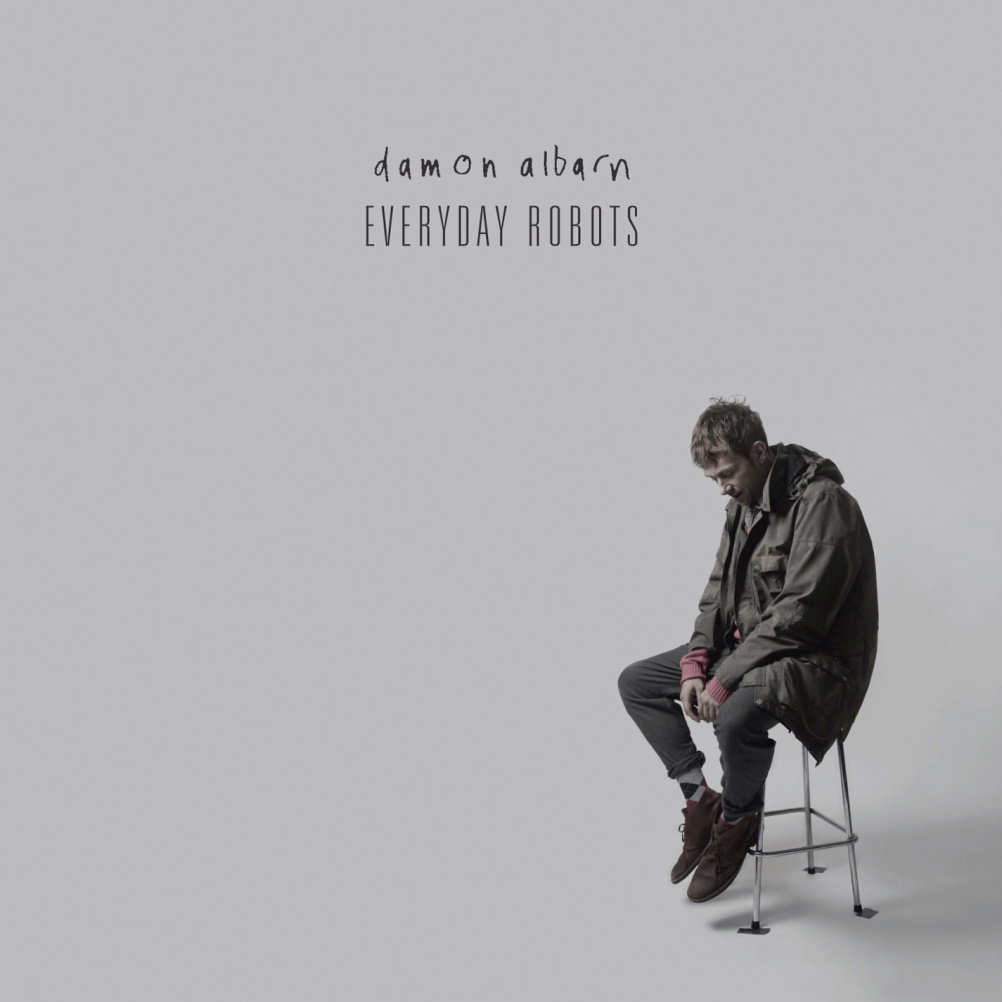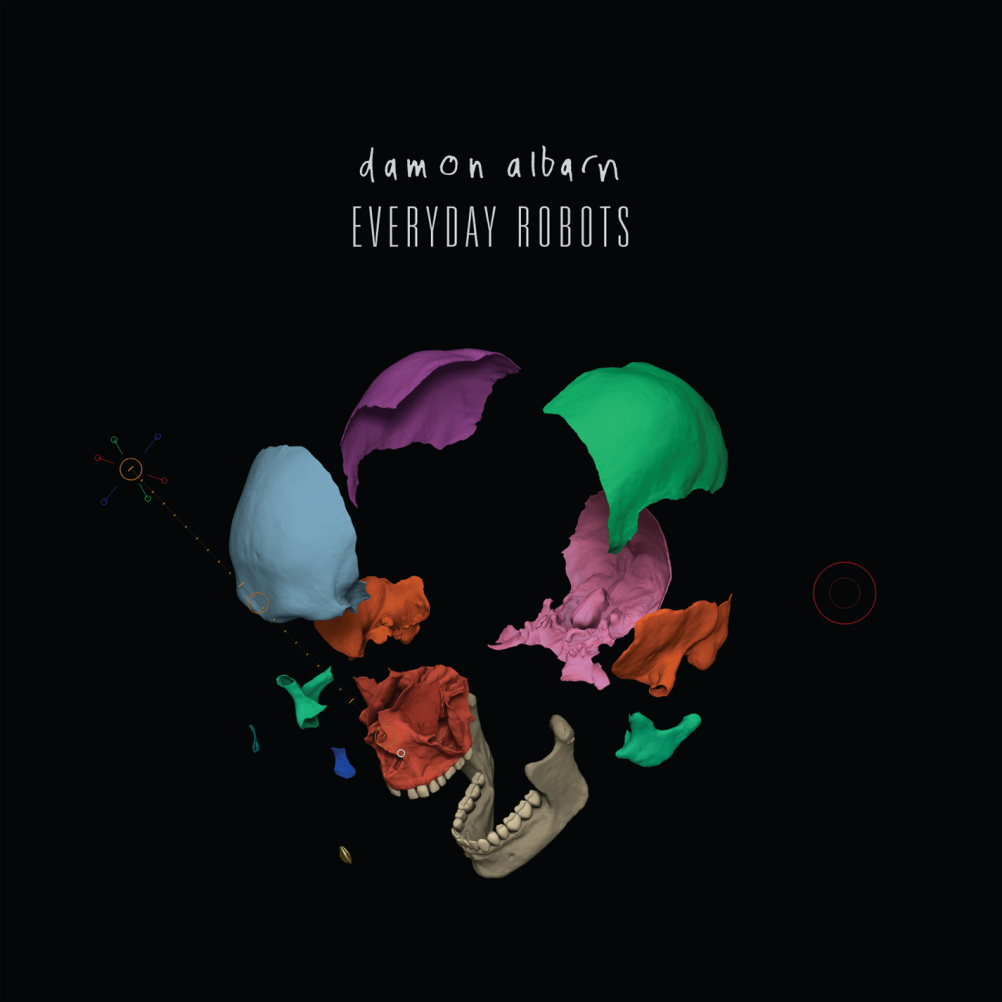Art director Aitor Throup on designing for Damon Albarn
‘Bring us the day they switch off the machines’, intones Damon Albarn plaintively on Under the Westway, the 2012 comeback single from Blur, the band he fronted since its formation more than 20 years ago.

Little did we know back in the hot summer of 2012 that this antagonism of man and machine, nature and technology, would act as a prologue to this year’s Everyday Robots, Albarn’s first solo album. Visually, as well as thematically, these concepts are the uneasy thread that underpins the record, thanks to Albarn’s collaboration with Aitor Throup, the designer and artist art-directing the project.
The video for the album’s title track uses CGI software and cranial scans to create a surreal, colourful digital portrait of Albarn, a noticeable departure from the pared-back, naturalistic posture the singer is captured in for the album’s cover shoot.
Throup has worked with Albarn since meeting through friends, and went on to join him as art director on a trip to the Congo with Oxfam and Warp for the DRC Music project, when 11 Western musicians were paired with musicians from Democratic Republic of Congo to produce an album in five days.
Again, the project chimed with Albarn’s explorations of the marriage of pastoral and technological, hinted at time and again from the ritualistic leanings of 2011’s English Opera Dr Dee, to 2002 album Mali Music, and even in the heart-breaking, melancholic maelstrom of Blur’s 13.
However, it’s only now with the release of Everyday Robots that this tension been realised so clearly in a visual sense, with Throup’s innovative portraiture. He talks to us about how he went about creating the design concepts.
Design Week: How did the collaboration with Damon Albarn on Everyday Robots come about?
Aitor Throup: [On the DRC trip] I started seeing our similarities in how we approach work – we’re always trying to define a new approach. Conceptually I was trying to mirror the process of the [music] producer and reflect that visually. [Albarn] had always talked about a solo project and it seemed really natural to work together on it. It wasn’t really an official agreement, it was really relaxed – he invited me down to the studio and he was showing me stuff and I just got more deeply involved. We have mutual respect and really trust each other – we didn’t overthink anything.
DW: Did Albarn have any ideas about what he wanted from the artwork?
AT: It’s very natural to already have ideas that both parties bring to the table, so we did discuss certain ideas at the beginning but I was very open about wanting to get rid of those really, especially my own ideas.
DW: So how did you go about creating the concepts for the artwork?
AT: A lot of my work is connected to the idea of fighting off your instinctive impulses and trying to react to something. You almost go back to a childlike state of mind. That’s the challenge – to break away from preconceived structures and ideas about what should work and what I like. Whatever visual solution would come out should be born out of the work itself so that as artists it’s a true collaboration, rather than bringing your own aesthetic and trying to shoehorn [Albarn’s] stuff into what I do. I always have a search for something new – the idea of finding a new aesthetic language, breaking away from standardised ideals and fighting my instinctive impulses.

DW: Tell me about the portraiture idea you arrived at.
AT: I knew 100 per cent that the ultimate metaphor for [Albarn] as a solo artist is portraiture – ideas of isolation and singularity were very, very important. Then it became about how to visually and physically represent Damon.
DW: How will you carry that metaphor forward with artwork for other singles, or other touchpoints associated with the record in future?
AT: Whether it’s a very light or very dark background, whether it’s dull or bright colours, it’s about interpretations of Damon and what that does. The single and the album have the same title, but the album shows the scope Damon has as an artist. He’s not limited by his own aesthetic. [The album and single artwork] are both portraits of him and there are layers that unify them – the logo is in the same place, and the orientation of the skull is the same on the album and the single. It’s all about Damon, but in an ego-less way: he’s the subject matter of the record. In a way every record he’s done is a solo record, and every record he does isn’t, but with this one he’s the protagonist of the piece and that’s an important thing to interpret and carry through. You’ve seen how disparate the visual style can be and that’s a statement in itself.

DW: What aspects of the record did you draw on for inspiration with the artwork?
AT: When I started listening to the record, very early on for me I wanted to distil its elements and get to the essence. I spend a lot of time getting to the right words or messages, and then every ingredient is relevant. That was the first thing I embarked on when I was hanging out with Damon and Richard [Russell, owner of XL Recordings, who produced Everyday Robots] was getting to relevant words, and this idea of the antagonism between nature and technology was a very early phrase that came up. [Albarn] is fascinated with ancient stuff and the timelessness of nature – whether it’s with the African music or even with Dr Dee [Albarn’s Alan Moore-inspired 2011 English Opera] there’s that spiritual, tribal element. It’s about channelling nature but Damon’s so open to using technology and absorbing that in a very unique way. With Richard’s production be brought a real technology flavour and created something very ethereal.
DW: How was that carried through to the final visual concept?
AT: I took those ingredients and wanted to paint a portrait of Damon that showed the human nature as biology and technology as CGI. Retrospectively analysing my work, with the colours they’re used in anatomical models, or for colour coding different sections [of human heads] in education or in facial reconstruction. Things like that are very serious processes but I wanted to give it a child-like edge, almost like toys. I think that sums up Damon and his work: he’s like the deepest, most innovative musical thinker but he’s like a little kid as well. He doesn’t take that depth so seriously, which is reflected by the use of different colours. It was a real departure for me to use those colours – it shows me I’m not replying on my own artistic impulses. It’s a real moment of flux for me.
-
Post a comment




